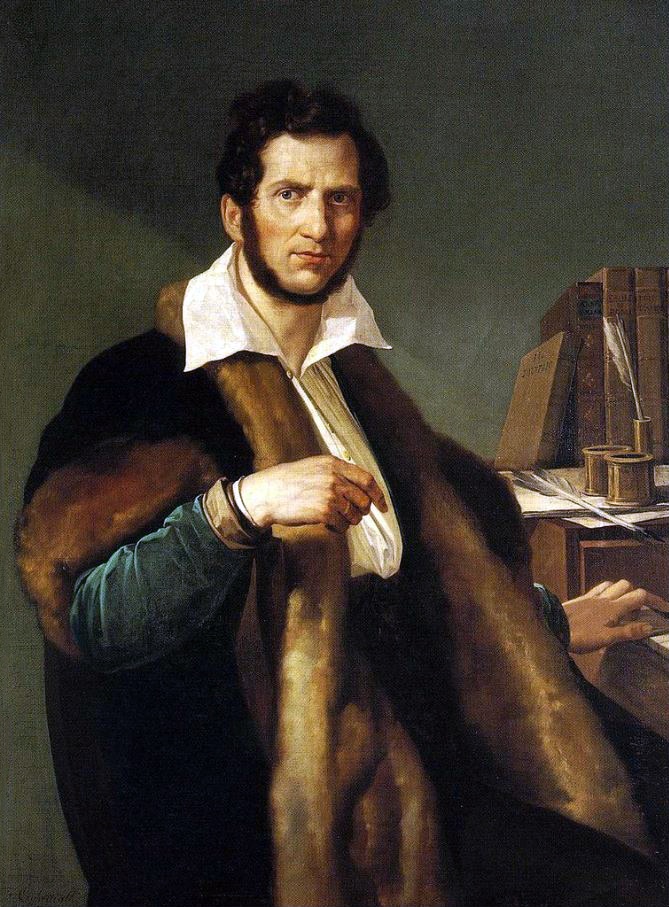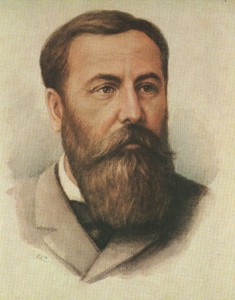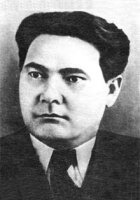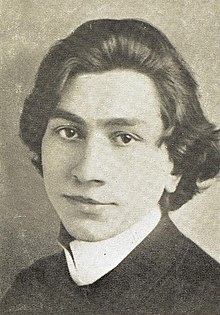
Gaetano Donizetti (Gaetano Donizetti) |
Contents
Gaetano Donizetti
Donizetti’s melodies delight the world with their playful cheerfulness. Heine
Donizetti is a highly progressive talent who discovers the tendencies of the Renaissance. G. Mazzini
Music Donizetti wonderful, magnificent, amazing! V. Bellini
G. Donizetti – a representative of the Italian romantic opera school, an idol of bel canto fans – appeared on the operatic horizon of Italy at a time when “Bellini was dying and Rossini was silent.” The owner of an inexhaustible melodic gift, a deep poetic talent and a sense of theatricality, Donizetti created 74 operas, which revealed the breadth and diversity of his composer talent. Donizetti’s operatic work is unusually diverse in genres: these are socio-psychological melodramas (“Linda di Chamouni” – 1842, “Gemma di Vergi” – 1834), historical and heroic dramas (“Velisario” – 1836, “The Siege of Calais” – 1836, ” Torquato Tasso” – 1833, “Mary Stuart” – 1835, “Marina Faliero” – 1835), lyric-dramatic operas (“Lucia di Lammermoor” – 1835, “The Favorite” – 1840, “Maria di Rogan” – 1843), tragic melodramas (“Lucretia Borgia” – 1833, “Anne Boleyn” – 1830). Especially diverse are operas written in the buffa genre, musical farces (“Castle of the Invalids” – 1826, “New Pursonyak” – 1828, “Crazy by Order” – 1830), comic operas (“Love’s Potion” – 1832, “Don Pasquale” – 1843), comic operas with conversational dialogues (The Daughter of the Regiment – 1840, Rita – staged in 1860) and buffa operas proper (The Governor in Difficulty – 1824, The Night Bell – 1836).
Donizetti’s operas are the fruits of the composer’s unusually meticulous work on both music and libretto. Being a widely educated musician, he used the works of V. Hugo, A. Dumas-father, V. Scott, J. Byron and E. Scribe, he himself tried to write a libretto, and composed humorous poems perfectly.
In the operatic work of Donizetti, two periods can be conditionally distinguished. In the works of the first (1818-30), the influence of G. Rossini is very noticeable. Although the operas are unequal in content, skill and manifestation of the author’s individuality, in them Donizetti appears as a great melodist. The period of creative maturity of the composer falls on the 30s – the first half of the 40s. At this time, he creates masterpieces that have entered the history of music. Such are the “always fresh, always charming” (A. Serov) opera “Love Potion”; “one of the purest diamonds of Italian opera” (G. Donati-Petteni) “Don Pasquale”; “Lucia di Lammermoor”, where Donizetti revealed all the subtleties of the emotional experiences of a loving person (De Valori).
The intensity of the composer’s work is truly unique: “The ease with which Donizetti composed music, the ability to quickly catch a musical thought, make it possible to compare the process of his work with the natural fruiting of flowering fruit trees” (Donati-Petteni). Equally easily, the author mastered various national styles and genres of opera. In addition to operas, Donizetti wrote oratorios, cantatas, symphonies, quartets, quintets, spiritual and vocal compositions.
Outwardly, Donizetti’s life seemed a continuous triumph. In fact, this was not the case. “My birth is shrouded in mystery,” wrote the composer, “for I was born underground, in the basement of the Borgo Canal, where a ray of the sun never penetrated.” Donizetti’s parents were poor people: his father was a watchman, his mother was a weaver. At the age of 9, Gaetano enters the Simon Mayr Charitable Music School and becomes the best student there. At the age of 14, he moved to Bologna, where he studied at the Lyceum of Music with S. Mattei. The outstanding abilities of Gaetano were first revealed at the exam in 1817, where his symphonic works and cantata were performed. Even at the Lyceum, Donizetti wrote 3 operas: Pygmalion, Olympias and The Wrath of Achilles, and already in 1818 his opera Enrico, Count of Burgundy was successfully staged in Venice. Despite the success of the opera, it was a very difficult period in the life of the composer: contracts for composing could not be concluded, the family needed financial assistance, and those close to him did not understand him. Simon Mayr arranged for Donizetti to contract with the Rome Opera to compose the opera Zoraida of Granata. The production was a success, but the criticism that fell on the young composer was insultingly cruel. But this did not break Donizetti, but only strengthened his strength in an effort to improve his skills. But misfortunes follow one after another: first the composer’s son dies, then his parents, his beloved wife Virginia, who is not even 30 years old: “I am alone on earth, and I am still alive!” Donizetti wrote in despair. Art saved him from suicide. An invitation to Paris follows shortly. There he writes a romantic, charming, “Daughter of the Regiment”, an elegant “Favorite”. Both of these works, as well as the intellectual Polievkt, were received with enthusiasm. Donizetti’s last opera is Catarina Cornaro. It was staged in Vienna, where in 1842 Donizetti received the title of Austrian court composer. After 1844, mental illness forced Donizetti to give up composing and caused his death.
Donizetti’s art, which represented a decorative singing style, was organic and natural. “Donizetti absorbed all the joys and sorrows, worries and worries, all the aspirations of ordinary people for love and beauty, and then expressed them in beautiful melodies that still live in the heart of the people” (Donati-Petteni).
M. Dvorkina
- Italian opera after Rossini: the work of Bellini and Donizetti →
The son of poor parents, he finds the first teacher and benefactor in the person of Mayr, then studies at the Bologna Musical Lyceum under the guidance of Padre Mattei. In 1818, his first opera, Enrico, Count of Burgundy, was staged in Venice. In 1828 he married the singer and pianist Virginia Vasselli. In 1830, the opera Anna Boleyn was staged with triumph at the Carcano theater in Milan. In Naples, he holds the post of director of theaters and the position of a teacher at the conservatory, while being very respected; nevertheless, in 1838, Mercadante became director of the conservatory. This was a big blow for the composer. After the death of his parents, three sons and wife, he (despite numerous love stories) remains alone, his health is shaken, including due to incredible, titanic work. Subsequently becoming the author and director of private concerts at the Vienna Court, he once again reveals his great potential. In 1845 he became seriously ill.
“I was born in the Borgo Canal underground: a ray of light never penetrated into the cellar, where I descended the stairs. And, like an owl, flying out of the nest, I always carried in myself either bad or happy forebodings. These words belong to Donizetti, who thus wanted to determine his origins, his fate, marked by a fatal combination of circumstances, which, however, did not prevent him from alternating serious, even tragic and gloomy plots in his operatic work with funny and downright farcical plots. “When comic music is born in my head, I feel an obsessive drilling in its left side, when serious, I feel the same drilling on the right,” the composer argued with nonchalant eccentricity, as if wanting to show how easily ideas arose in his mind. . “Do you know my motto? Fast! Perhaps this is not worthy of approval, but what I did well was always done quickly, ”he wrote to Giacomo Sacchero, one of his librettists, and the results, although not always, confirmed the validity of this statement. Correctly writes Carlo Parmentola: “The inequivalence of Donizetti’s writings is now a common place for criticism, as well as his whitewashed creative activity, the reasons for which are usually sought in the fact that he was always driven by inexorable deadlines. However, the fact remains that even as a student in Bologna, when nothing hurried him, he worked feverishly and continued to work at the same pace even when, having finally achieved prosperity, he got rid of the need to continuously compose. Perhaps this need to continuously create, regardless of external circumstances, at the cost of weakening the control of taste, was a feature of his restless personality as a romantic musician. And, of course, he was one of those composers who, having left the power of Rossini, were increasingly convinced of the need to follow changes in taste.
“For more than a decade,” writes Piero Mioli, “Donizetti’s many-sided talent has been freely and diversely expressed in serious, semi-serious and comic operas in accordance with more than half a century of Italian opera practice, personified at that time in the image of the impeccable Rossini, while starting from the 30s XNUMXs, production in a serious genre gains a quantitative advantage, as, however, this was required by the impending era of romanticism and the example of such a contemporary as Bellini, who was alien to comedy … If the Rossini theater established itself in Italy in the second and third decades of the XNUMXth century, if the Verdi theater advanced in the fifth, the fourth belongs to Donizetti.
Occupying this key position, Donizetti, with his characteristic freedom of inspiration, rushed to the embodiment of truthful experiences, to which he gave the same scope, freeing them, if necessary, from the objective and practical requirements of dramatic sequence. The composer’s feverish search made him prefer the finale of the opera series as the only truth necessary to comprehend the plot. It was this desire for truth that simultaneously fed his comic inspiration, thanks to which, creating caricatures and caricatures, he became the largest author of musical comedies after Rossini, and determined his turn in his mature period to comic plots marked not only by sad irony, but by gentleness and humanity. . According to Francesco Attardi, “opera buffa was in the Romantic period a counterbalance, a sober and realistic test of the ideal aspirations of nineteenth-century melodrama. Opera buffa is, as it were, the other side of the coin, encouraging us to think more about opera seria. if it were a report on the bourgeois social structure.
The vast legacy of Donizetti, which is still waiting for due recognition, rightfully deserves the general assessment that such an authority in the field of studying the composer’s work as Guglielmo Barblan gives her: “When will the artistic significance of Donizetti become clear to us? The preconceived notion that weighed on him for more than a century presented him as an artist, albeit a genius, but carried away by his amazing lightness over all problems in order to surrender to the power of a momentary ardor of inspiration. A quick look at seven dozen Donizetti operas, successful modern revivals of forgotten operas prove, on the contrary, that if in some cases such an opinion may not be a prejudice, then in his significant works … Donizetti was an artist who was aware of the responsibility of the task entrusted to him and peering intently at European culture, in which he clearly discerned the only way to move our melodrama from the simplistic positions that gave it provincialism, which were falsely called “tradition” ”.
G. Marchesi (translated by E. Greceanii)
Compositions:
operas (74), including Madness (Una Follia, 1818, Venice), Poor wandering virtuosos (I piccoli virtuosi ambulanti, 1819, Bergamo), Peter the Great, the Russian Tsar, or the Livonian carpenter (Pietro il grande Czar delle Russie o Il Falegname di Livonia, 1819, Venice), Rural wedding (Le Nozze in villa, 1820-21, Mantua, carnival), Zoraida Pomegranate (1822, theater “Argentina”, Rome), Chiara and Serafina, or Pirates (1822, theater “La Scala”, Milan), Happy delusion (Il fortunato inganno, 1823, theater “Nuovo”, Naples), Governor in difficulty (L’Ajo nell’imbarazzo, also known as Don Gregorio, 1824, theater “Valle”, Rome), Castle of the Invalids (Il Castello degli invalidi, 1826, Carolino Theatre, Palermo), Eight Months in Two Hours, or Exiles in Siberia (Otto mesi in due ore, ossia Gli Esiliati in Siberia, 1827, Nuovo Theater , Naples), Alina, Queen of Golconda (Alina regina di Golconda, 1828, Carlo Felice Theater, Genoa), Pariah (1829, San Carlo Theater, Naples), Elizabeth in the Castle Kenilworth (Elisabetta al castello di Kenilworth, also called. Kenilworth Castle, based on the novel by W. Scott, 1829, ibid.), Anne Boleyn (1830, Carcano Theatre, Milan), Hugo, Count of Paris (1832, La Scala Theatre, Milan), Love Potion (L’ Elisir d’amore, 1832, Canobbiana Theatre, Milan), Parisina (after J. Byron, 1833, Pergola Theatre, Florence), Torquato Tasso (1833, Valle Theatre, Rome), Lucrezia Borgia (based on the drama of the same name V. Hugo, 1833, La Scala Theatre, Milan), Marino Faliero (based on the play of the same name by J. Byron, 1835, Italien Theatre, Paris), Mary Stuart (1835, La Scala Theatre, Milan), Lucia di Lammermoor (based on the novel by W. Scott “The Lammermoor Bride”, 1835, the San Carlo Theater, Naples), Belisarius (1836, the Fenice Theater, Venice), The Siege of Calais (L’Assedio di Calais, 1836, the theater ” San Carlo, Naples), Pia de’Tolomei (1837, Apollo Theater, Venice), Robert Devereux, or Earl of Essex (1837, San Carlo Theater, Naples), Maria Di Rudenz (1838, theater ” Fenice, Venice), Daughter of the Regiment (La fille du régiment, 1840, Opera Comique, Paris), Martyrs (Les Martyrs , a new edition of Polyeuctus, based on the tragedy by P. Corneille, 1840, the Grand Opera Theater, Paris), Favorite (1840, ibid.), Adelia, or the Daughter of the Archer (Adelia, about La figlia dell’arciere, 1841, theater ” Apollo, Rome), Linda di Chamouni (1842, Kärntnertorteatr, Vienna), Don Pasquale (1843, Italien Theatre, Paris), Maria di Rohan (Maria dl Rohan on Il conte di Chalais, 1843, Kärntnertorteatr) , Vienna), Don Sebastian of Portugal (1843, Grand Opera Theatre, Paris), Caterina Cornaro (1844, San Carlo Theatre, Naples) and others; 3 oratorios, 28 cantata, 16 symphonies, 19 quartets, 3 quintets, church music, numerous vocal works.





